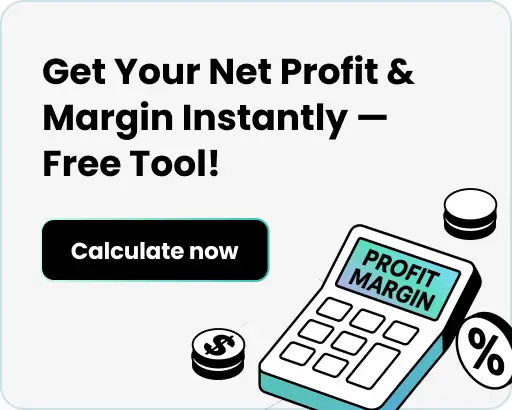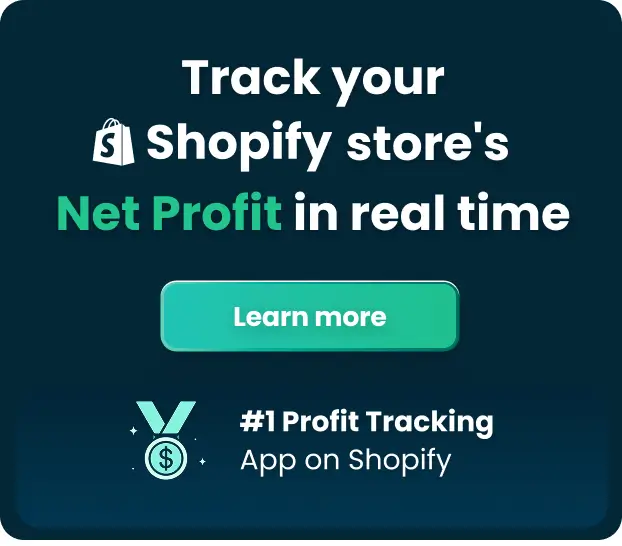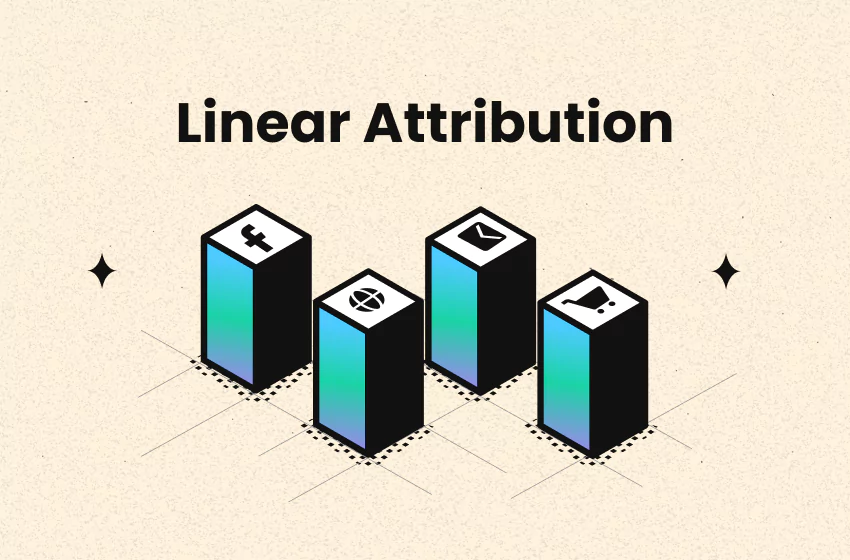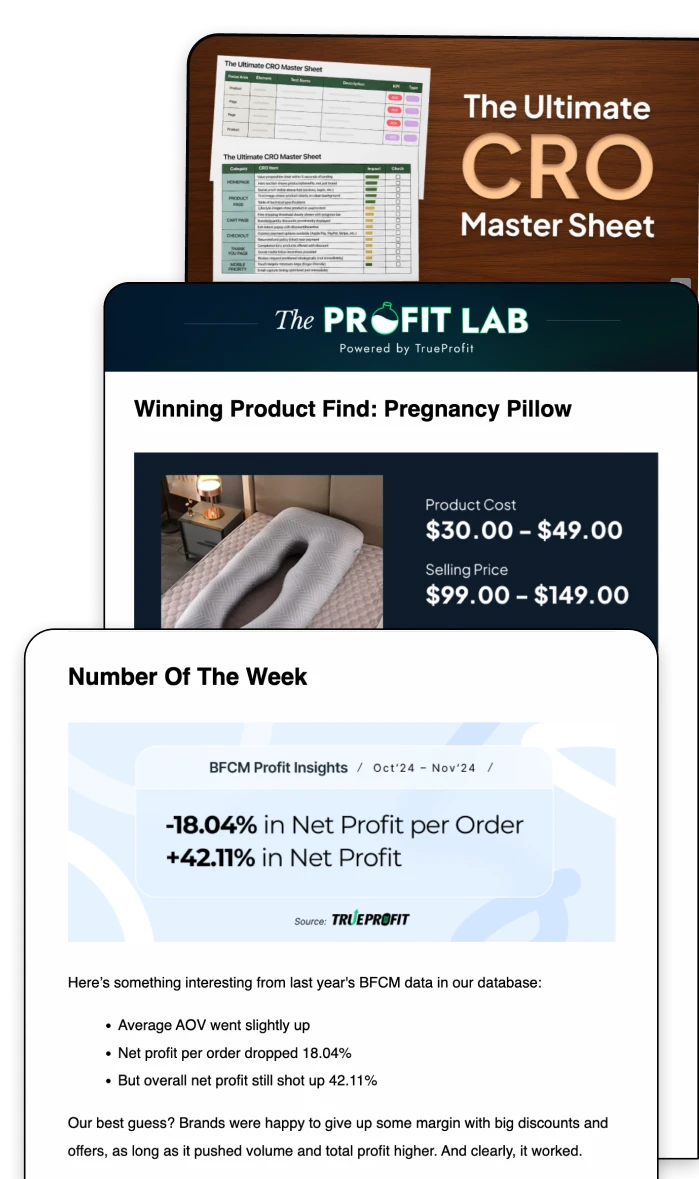ROI Marketing 101: Definition & How to Calculate

Return on Investment (ROI) in marketing measures how much revenue your campaigns generate compared to the cost of running them. Understanding ROI allows you to assess whether your marketing efforts are generating enough revenue to justify the costs. However, many marketers struggle with accurate calculations, misinterpret ROI benchmarks, or overlook key factors like customer lifetime value (CLV).
In this guide, we’ll break down what ROI marketing is, how to calculate it, common mistakes to avoid, and what qualifies as a good ROI. Plus, you’ll get actionable tips to improve your marketing ROI and drive sustainable growth.
What is ROI Marketing and Why Does It Matters?
Return on Investment (ROI) measures how much profit you make compared to what you spend. In marketing, it helps you see which campaigns bring in sales and which ones waste money. A positive ROI means your marketing is working, while a negative ROI signals a loss.
Understanding your profit margin is key to improving your ROI. Use our Profit Margin Calculator to quickly determine how much you’re making on each sale and adjust your pricing strategy for maximum profitability.
Why Should Merchants Care About ROI Marketing?
By tracking and improving your ROI, you ensure that your marketing budget drives real sales and sustainable business growth. For eCommerce businesses, every dollar spent on marketing should drive sales. ROI marketing helps you:
1. Make Smarter Budget Decisions
Not all marketing efforts bring in equal results. Tracking ROI helps you see which ads, promotions, or channels generate the most revenue so you can focus on what works and stop wasting money on what doesn’t.
2. Increase Profits Without Overspending
By understanding which campaigns bring in the highest returns, you can adjust your marketing strategy to get better results without increasing your ad spend.
3. Measure What’s Driving Sales
ROI marketing helps you pinpoint which campaigns, platforms, and traffic sources are leading to conversions—whether it's Facebook Ads, Google Shopping, email marketing, or influencer promotions.
4. Stay Ahead of Competitors
Knowing how much profit you make from each marketing dollar helps you compete smarter. If your competitors are overspending on low-ROI strategies, you can outmaneuver them by investing in what actually works.
How to Calculate ROI Marketing?
ROI (Return of Investment) Formula
For example, if you spent $5,000 on a campaign and it generated $20,000 in revenue, your ROI would be:
This means you earned three times your initial investment. However, businesses should also consider factors like customer lifetime value (CLV) and indirect benefits such as brand awareness when assessing ROI.
Common Mistakes When Calculating ROI in Marketing (and How to Fix Them)
Accurately measuring ROI in marketing is crucial for making informed decisions, but many businesses make calculation errors that lead to misleading insights. By avoiding these common mistakes, you can get a more accurate picture of your marketing performance and make data-driven decisions that drive sustainable growth. Here’s what to watch out for:
1. Ignoring Customer Lifetime Value (CLV)
Some campaigns, like email nurturing or brand-building efforts, may not generate immediate sales but increase long-term customer value. If you only focus on short-term revenue, you might undervalue these efforts.
Tip: Consider CLV in your calculations by tracking repeat purchases, retention rates, and upsells. A campaign that acquires high-value customers can be more profitable over time than one that generates quick but low-value sales.
2. Overlooking Attribution Models
Many marketers assign all credit to the last-click source (e.g., a final ad or email) rather than analyzing the entire customer journey. This ignores the impact of earlier touchpoints like social media, content marketing, and SEO.
Tip: Use multi-touch attribution models to see how different channels contribute to conversions. Tools like Google Analytics or TrueProfit can help you analyze customer interactions across the entire funnel.
3. Not Factoring in All Costs
If you only consider ad spend, you might overestimate profitability. Marketing costs go beyond paid ads and include software subscriptions, team salaries, creative production, and agency fees.
Tip: Ensure you account for all direct and indirect costs when calculating ROI. This gives a realistic view of your marketing profitability and helps optimize budget allocation.
4. Short-Term Focus
Measuring ROI too soon can lead to incorrect conclusions about a campaign’s success or failure. Some marketing efforts—especially content marketing, SEO, and customer loyalty programs—take months to generate a return.
Tip: Choose a realistic time frame for measuring ROI based on your business model. For example:
- E-commerce: Shorter cycles (30-90 days) may be sufficient.
- B2B: Longer sales cycles (6-12 months) require a long-term view.
What is a Good ROI Marketing?
A good marketing ROI depends on your industry, business model, and marketing channels. However, as a general benchmark:
- A 5:1 revenue-to-cost ratio (500%) is considered strong.
- A 10:1 ratio (1000%) is exceptional and indicates highly efficient marketing.
- Lower ratios may still be profitable if your customer acquisition cost (CAC) is low and your customer lifetime value (CLV) is high.
For example, industries with high repeat purchases (like subscription businesses) can sustain a lower ROI because of long-term customer value. Meanwhile, businesses with one-time purchases (like luxury retail) need a higher ROI to cover costs.
To determine if your ROI is good, compare it against industry benchmarks, your profit margins, and the long-term value of acquired customers.
3 Ways to Improve Your ROI Marketing
Improving your marketing ROI isn’t just about cutting costs—it’s about making smarter, data-driven decisions that maximize profitability. Here are three effective ways to enhance your marketing ROI:
1. Optimize High-Performing Channels
Not all marketing channels deliver the same return. Instead of spreading your budget across multiple platforms, use marketing attribution tools to pinpoint which channels generate the highest ROI.
- Identify your top-performing traffic sources—whether it’s paid ads, SEO, email marketing, or social media.
- Adjust your budget allocation to double down on what works and scale back on underperforming strategies.
- Experiment with A/B testing to refine your messaging, targeting, and ad creatives for better conversions.
2. Leverage Automation & AI for Smarter Marketing
Marketing automation and AI-powered tools can increase efficiency, improve targeting, and reduce costs. These tools help businesses optimize campaigns, nurture leads, and boost conversion rates with minimal manual effort.
- AI-driven personalization: Deliver tailored product recommendations, email campaigns, and ad experiences based on customer behavior.
- Automated workflows: Streamline repetitive tasks like email follow-ups, lead scoring, and ad bidding.
- Predictive analytics: Use AI to forecast trends, customer lifetime value, and high-performing marketing strategies.
3. Enhance Customer Retention Strategies
Acquiring new customers is expensive, so focusing on retention can significantly improve ROI. A strong retention strategy ensures long-term profitability by increasing customer lifetime value (LTV).
- Email marketing & automation: Send targeted promotions, abandoned cart reminders, and personalized content to keep customers engaged.
- Loyalty programs & incentives: Reward repeat buyers with discounts, points, or exclusive offers to encourage repeat purchases.
- Exceptional customer experience: Ensure seamless post-purchase support, fast shipping, and excellent service to build lasting relationships.
By optimizing your best-performing channels, leveraging automation, and focusing on customer retention, you can boost your ROI and drive sustainable business growth. To boost your ROI more efficiently, TrueProfit bridges the gap between your ROI and your actual earnings - net profit. Track your attribution, marketing metrics, and net profit in one place so every dollar spent leads to real, measurable growth.
ROI Marketing FAQs
What is ROI in marketing?
ROI in marketing measures the return on investment from marketing campaigns. It quantifies how much revenue is generated for each dollar spent on marketing efforts.
How much ROI is good in marketing?
A good marketing ROI is typically a 5:1 ratio, meaning for every $1 spent, $5 in revenue is generated. Exceptional ROI is around a 10:1 ratio. Anything below a 2:1 ratio may indicate unprofitable marketing efforts.
What marketing has the highest ROI?
Search Engine Optimization (SEO) typically offers the highest ROI. Recent data shows that 29% of marketers believe organic search delivers the best ROI, with an average return of 748%, or $7.48 for every dollar spent on a comprehensive SEO campaign.
How do you calculate ROI?
To calculate ROI, use this formula:
ROI = (Investment Gain / Investment Base) × 100
This means you subtract the initial cost of the investment from its final value, divide that result by the cost of the investment, and then multiply by 100 to get a percentage.
What is the difference between roas and ROI?
ROAS measures the gross revenue generated for every dollar spent on advertising, while ROI accounts for the net profit after all expenses have been deducted. ROAS focuses on advertising efficiency, while ROI provides a broader view of overall profitability.
What is a realistic ROI?
A realistic ROI is often considered to be around 10.5% or greater, which reflects the average return of the S&P 500, a benchmark for the U.S. stock market.
Can ROI be negative?
Yes, ROI can be negative. It means you've lost money on an investment, as the returns didn’t cover the initial costs.
Is 20% ROI possible?
Yes, 20% ROI is possible. For example, if you invest $1,000 and receive $1,200 in return, your ROI would be 20%. This means you earned $200 profit on your $1,000 investment.
What is a good ROI for a small business?
A good ROI for a small business typically falls within the range of 25% to 50%. This range is based on common multiples of Seller’s Discretionary Earnings (SDE) and can vary depending on the industry and business factors.
How is ROI different from KPI?
ROI shows the return on investment after a campaign or activity, while KPIs track progress during the process. ROI looks backward to evaluate success, whereas KPIs are forward-looking and help predict future performance.
Leah Tran is a Content Specialist at TrueProfit, where she crafts SEO-driven and data-backed content to help eCommerce merchants understand their true profitability. With a strong background in content writing, research, and editorial content, she focuses on making complex financial and business concepts clear, engaging, and actionable for Shopify merchants.





![Time Decay Attribution Model: What It Is, Pros & Cons [2025]](https://be.trueprofit.io/uploads/time-decay-attribution-68931b1ee8064.webp)
![Ultimate Guide To U Shaped Attribution Model [+Example]](https://be.trueprofit.io/uploads/U-Shaped-Attribution-Model.png)
![The Ultimate Guide To Cross Channel Attribution [2024]](https://be.trueprofit.io/uploads/shopify-cost-of-goods-sold-definition-formula-how-to-track-2-68931b1aad5fb.webp)


![Data-Driven Attribution Model: How It Works & How to Set It Up [2025]](https://be.trueprofit.io/uploads/Data-Driven-Attribution_-Leveraging-Analytics-for-Better-Marketing-Decisions.png)
 Shopify profits
Shopify profits